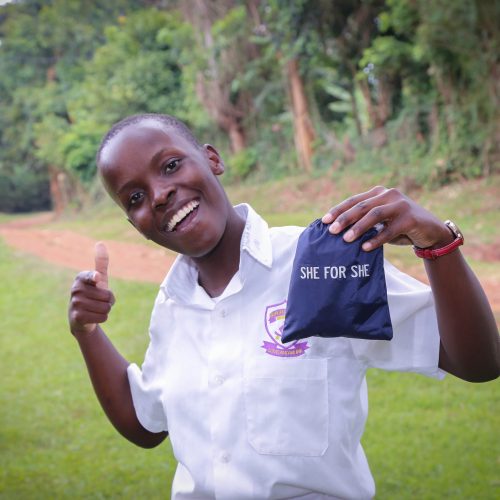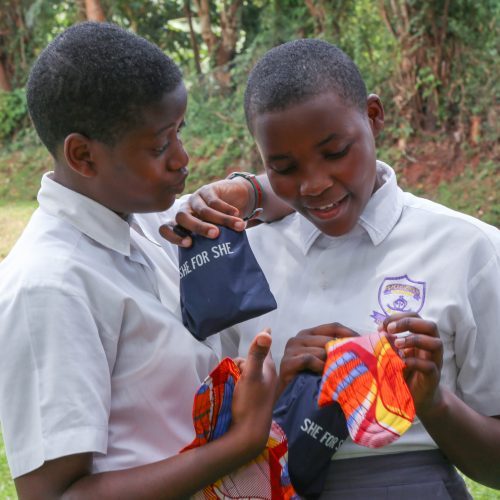In many African countries, menstruation is treated as a source of shame. The majority of girls and women do not have access to menstrual products. As a direct consequence, official numbers from World Band, UNESCO and UNICEF estimate that up to 10% of girls do not attend school while they are menstruating. However, the actual number should be expected to be much higher. This negatively affects their educational performance and reduces their opportunities for progress while limiting their futures.
She for She was created to empower young African girls and women through education and employment by removing the social stigma on menstruation (SDG 5) and keeping girls in school by ensuring that they are not limited by their menstruation (SDG 4). As the Global Goals are interconnected, She for She also address many other issues such as poverty reduction (SDG 1), ensuring access to sanitation for girls in vulnerable situations (SDG 6) and providing decent employment.
Your contribution will contribute to:
- Enabling She for She to create change by giving girls and women access to reusable pads, thereby increasing their chances for staying in school.
- Enabling She for She in creating comic books & offering menstrual education to school girls & boys in primary schools in selected rural communities across Africa. The purpose is for school girls to understand their bodies & menstruation and break existing taboos and misconceptions surrounding it as well as inform them how to handle their periods hygienically, so they can remain healthy and attend school. Furthermore, the comic books will also target school boys to fight misconceptions about menstruation.
- Lack of Toilets Keeping Girls Out Of School – Enabling She for She in building more school toilets.
Schools in rural areas are frequently some distance away—an hour’s walk or more is not uncommon—and getting to them from the villages often requires crossing difficult terrain. So, a girl with only a bit of cloth to protect herself is likely to arrive at school in an embarrassing mess. When she does get to school, there will usually be no private place to wash and change. Water closets, if they are present at all, are cramped and may be either shared with boys or open to view. Many girls simply choose to stay home during their periods. Therefore, it’s not only enough to provide girls with pads, we also need to provide them with proper toilets. A toilet in Uganda costs around 2 million shillings equivalent to 830 US dollars.



